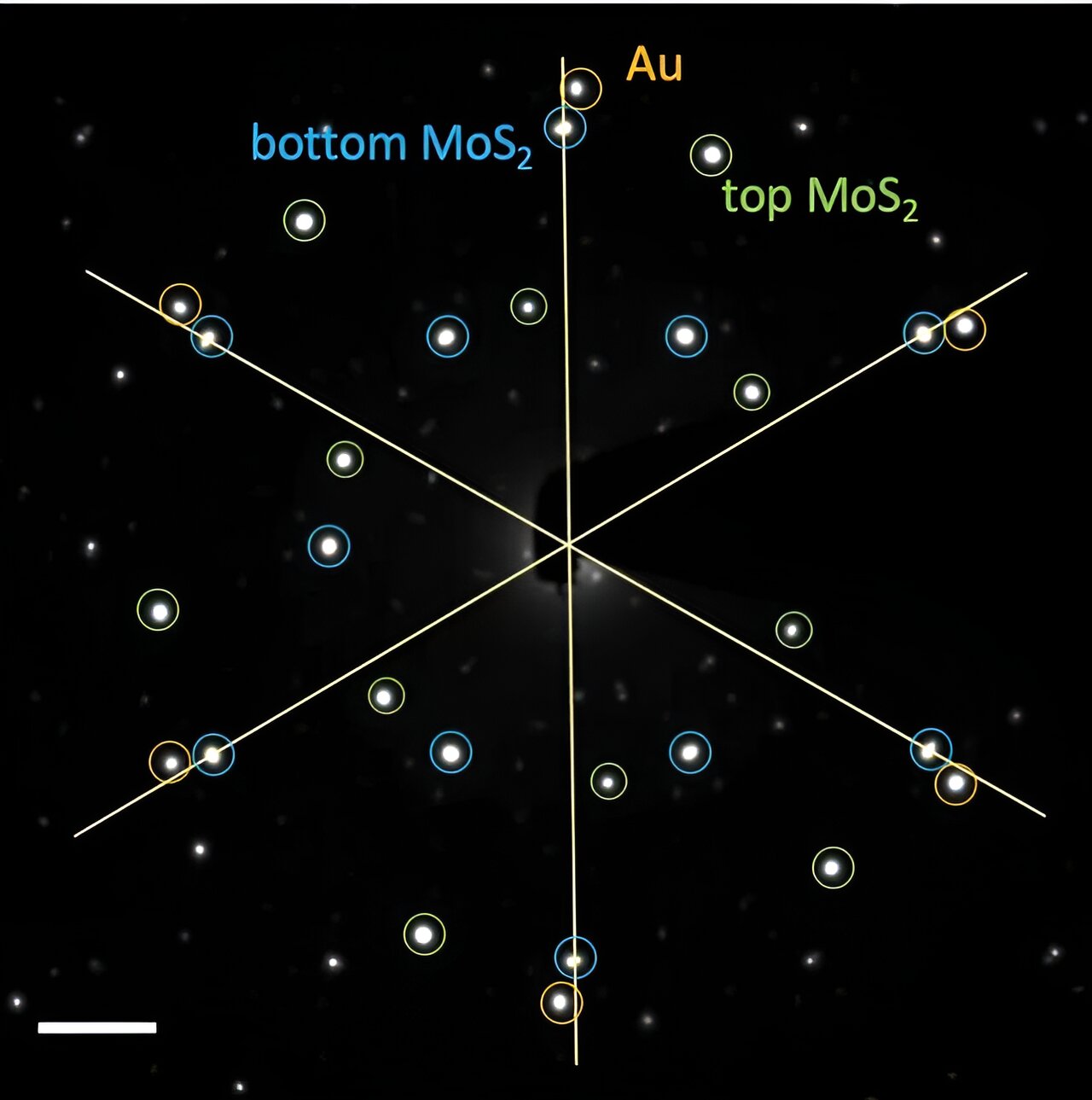Phys.org January 24, 2024
Epitaxial growth of a crystalline film normally proceeds from one substrate. Researchers at Stanford University expanded the concept of epitaxy to a regime of “twisted epitaxy” with the epilayer crystal orientation between two substrates influenced by their relative orientation. They annealed nanometer-thick gold nanoparticles between two substrates of exfoliated hexagonal molybdenum disulfide with varying orientation of their basal planes with a mutual twist angle ranging from 0° to 60°. For larger twist angles, Au had only a small misorientation with the bottom MoS2. Further revealed a periodic strain variation (<|±0.5%|) in the Au nanodisks associated with the twisted epitaxy, consistent with the Moiré registry of the two MoS2 twisted layers… read more. TECHNICAL ARTICLE

The diffraction pattern of region III, where diffraction spots from bottom MoS2 Credit: Yi Cui/Stanford University